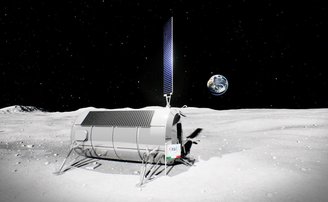In 2025, the United States National Aeronautics and Space Administration (NASA) plans to send astronauts to the Moon again; In 2024, the agency will send a manned mission into orbit of the natural satellite. It’s no surprise that the North American government is already working to build lunar residences that would allow astronauts to ‘live’ on the Moon for a while; now Italian Space Agency (ASI) Work has also begun on residences that will serve different purposes.
To achieve this goal, ASI announced a partnership with private space company Thales Alenia Space, which will be responsible for the development of the module called Multifunctional Habitat (MPH). The Italian agency’s goal is to establish a permanent outpost on the satellite to assist astronauts on upcoming space observation and exploration missions.
Although construction has not yet begun, the housing concept has been designed to provide a module that is fully compatible with the architecture of the Artemis mission. NASA’s Element Launch Review approved the MPH project design in October 2023; Mission Concept Review (MCR) will occur in 2024.
“MPH will mark a historical milestone as the first Italian habitation module to operate on the lunar surface. This is a source of great pride for our company, which has unique technical and organizational skills to overcome such challenges,” the research team said. Franco Fenoglio, program manager for the human and robotic planetary space at Thales Alenia Space, made an official statement.
Multifunctional housing on the Moon
Project presented by Thales Alenia Space It will serve as a protective environment for astronauts against space radiation and extreme temperatures on the lunar surface. The MPH will be built with a single cylinder equipped with a parabolic antenna to communicate between the crew, ships and Earth, and will have solar panels to provide energy.

According to the company, the next task of building MPH will be to coordinate an industrial consortium of large, medium and small companies. The ultimate mission of the partnership is to deliver a residential module that is safe, comfortable and connected to all components of the Artemis architecture.
“In accordance with ASI and NASA requirements, our next mission will be to complete the Mission Concept Review (MCR), expected in the first quarter of 2024. This will be a crucial milestone in advancing the project to the next stages of critical technology design and module development. Short in the harsh lunar environment Life support solutions for even to medium durations require cutting-edge technologies to protect against the regolith and the cold nights of the moon,” Thales Alenia Space explains in a statement.
Did you like the content? Keep up to date with space exploration news at TecMundo and enjoy discoveries about the coveted Moon’s south pole.
Source: Tec Mundo
I’m Blaine Morgan, an experienced journalist and writer with over 8 years of experience in the tech industry. My expertise lies in writing about technology news and trends, covering everything from cutting-edge gadgets to emerging software developments. I’ve written for several leading publications including Gadget Onus where I am an author.













